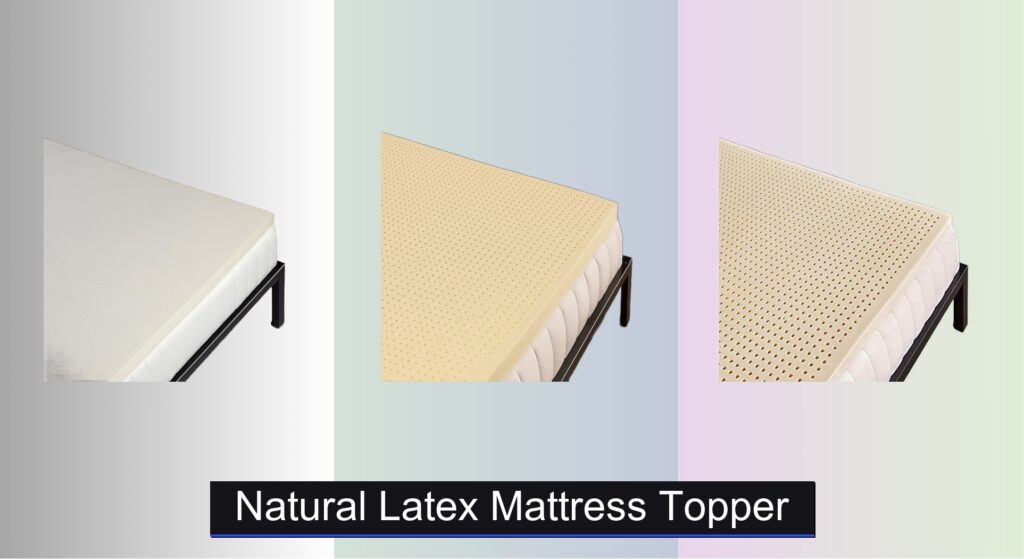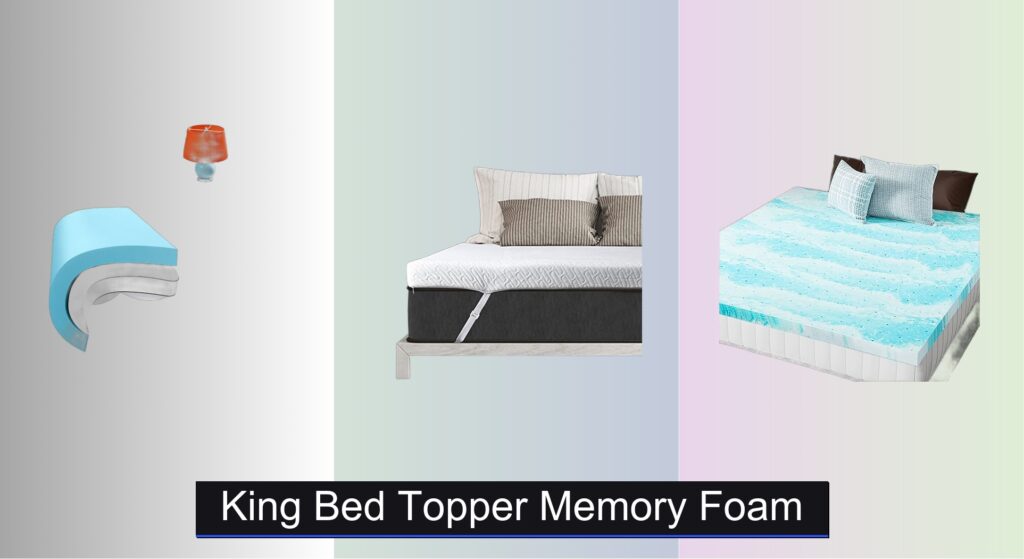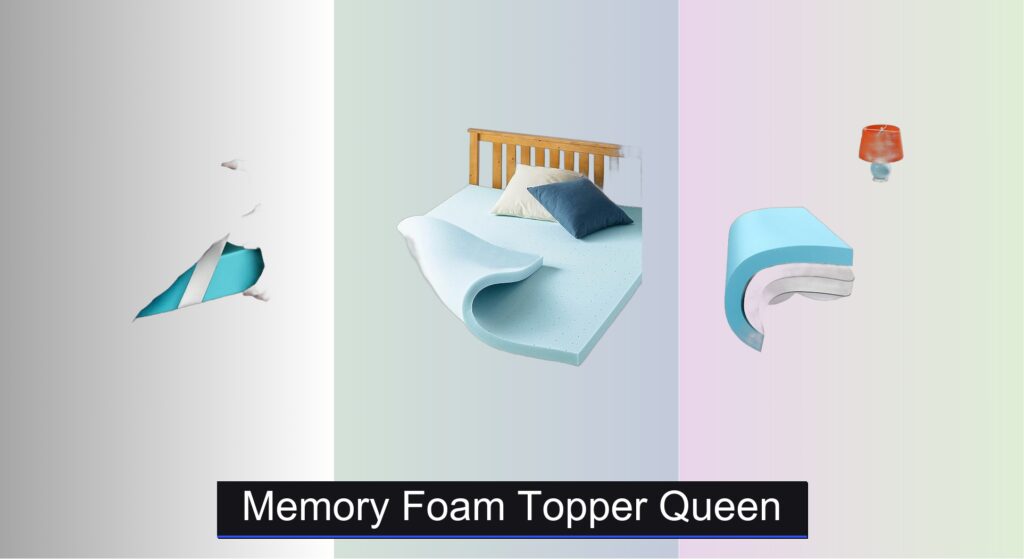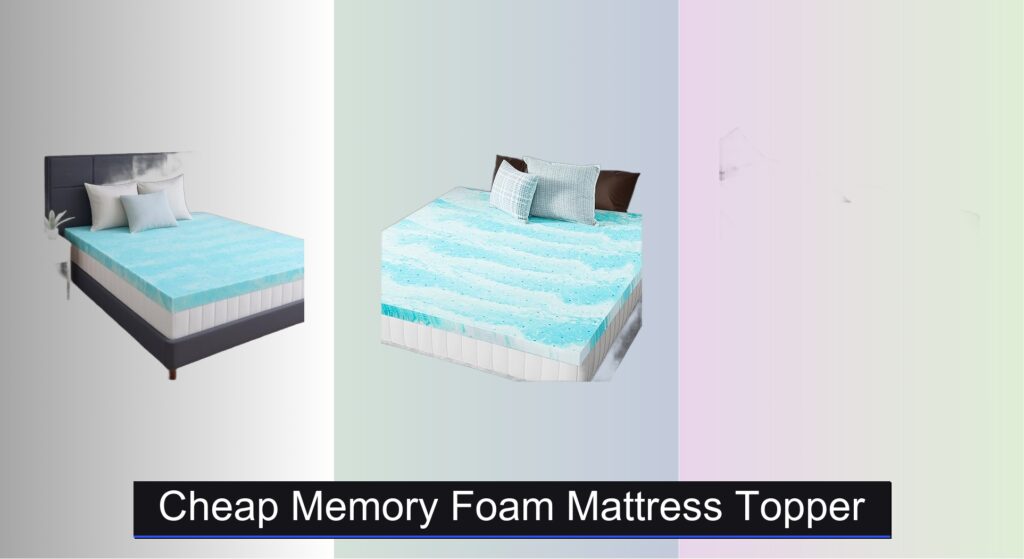If your mattress has lost its luster or feels too firm for comfort, a natural latex mattress topper can transform your sleep without the cost of a full replacement. Many struggle with pressure points, overheating, or a lack of responsive support—especially side sleepers and those with joint pain. Natural latex offers a resilient, breathable, and eco-friendly solution, contouring gently while maintaining spinal alignment and wicking away heat.
We evaluated over 50 natural latex mattress toppers, analyzing density, firmness, certifications like GOTS and GOLS, and cooling performance to identify the best options for durability and comfort. Our picks balance pressure relief, support, and value, based on rigorous research and user feedback. Keep reading to find the best natural latex mattress topper for your sleep needs.
Best Options at a Glance

Pure Green 3″ Soft Latex Topper
Best for Pressure Relief
- Soft
- 3 Inch
- Queen
- Natural Latex
- GOLS Certified
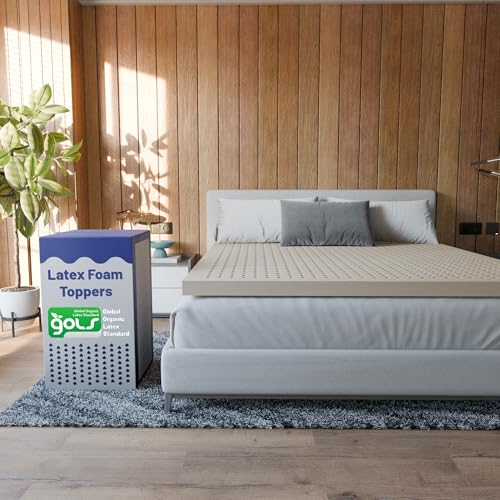
Greaton 1″ Natural Latex Topper
Best Budget Friendly
- 100% Natural Latex Foam
- Medium Firm
- 1-Inch
- Breathable Design
- Queen
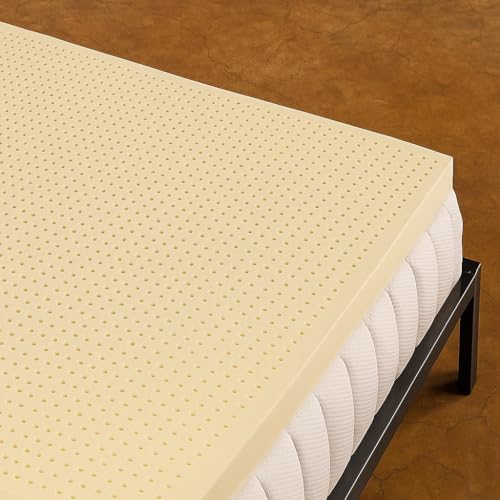
2″ Soft Organic Latex Topper
Best Value
- Natural Latex
- GOLS Certified
- Soft
- Breathable Foam
- Dunlop Process


ARyako 4″ Natural Latex Topper
Best for Thick Comfort
- 100% natural latex
- 4 in
- 150x200cm (59x79in)
- Firm
- Virtually allergy free

7-Zone 2″ Medium Latex Topper
Best for Zonal Support
- Queen
- 2 inch
- Medium
- 7 Zone
- GOLS Certified

Egg Crate Organic Latex Topper
Best for Breathability
- Organic Latex Foam
- GOLS Certified
- Soft Plush
- Queen
- Pressure Relief
Natural Latex Mattress Topper Review
Choosing the Right Natural Latex Mattress Topper
Latex Density & Firmness: The Core Considerations
When selecting a natural latex mattress topper, two key factors will significantly impact your sleep experience: density and firmness. Density refers to the weight of the latex, and directly correlates to durability and support. Higher density toppers (generally above 4 lbs/cubic foot) will last longer and offer more substantial support, making them a good investment – especially for heavier individuals. Lower density options are more affordable but may break down faster. Firmness dictates how the topper feels.
- Firm Toppers: Provide strong, pinpointed support, ideal for back and stomach sleepers, or those who prefer a very stable sleep surface. They minimize sinking and can help with spinal alignment. However, they might not be comfortable for side sleepers who need more pressure relief.
- Soft Toppers: Offer gentle contouring, relieving pressure on shoulders, hips, and knees. These are excellent for side sleepers and those seeking to soften a firm mattress. Be aware that very soft toppers may not provide enough support for heavier individuals.
- Medium Toppers: Strike a balance between support and comfort, suitable for combination sleepers or those unsure of their preference.
Choosing the right firmness relies heavily on your sleep position and personal preference. Consider your current mattress firmness too – a soft topper on an already soft mattress might lead to excessive sinking, while a firm topper on a firm mattress could be too rigid.
Latex Type: Dunlop vs. Talalay
Natural latex comes in two primary types: Dunlop and Talalay. While both are derived from rubber trees, their manufacturing processes differ, resulting in distinct characteristics.
- Dunlop Latex: Generally denser and more resilient, offering a firmer, more supportive feel. It’s often more affordable and considered a more eco-friendly process due to lower energy consumption.
- Talalay Latex: Lighter and more consistent in structure, providing a softer, more buoyant feel. It’s often preferred for those seeking pressure relief and a more luxurious experience. Talalay latex typically requires more processing.
Additional Features to Consider
- Thickness: Toppers range from 1″ to 4″ or more. Thicker toppers (3″+) offer more significant changes to mattress feel and increased comfort, while thinner toppers (1″-2″) provide subtle adjustments.
- Zonal Support: Some toppers feature zoned designs – different firmness levels in specific areas to provide targeted support to different body parts. This can be beneficial for spinal alignment.
- Certifications: Look for certifications like GOLS (Global Organic Latex Standard) and GOTS (Global Organic Textile Standard) to ensure the latex is genuinely organic and sustainably sourced. Fair Trade certifications also indicate ethical labor practices.
- Breathability: Natural latex is inherently breathable, but features like perforation or an open-cell structure can enhance airflow and prevent overheating.
- Cover: Some toppers come with organic cotton covers, adding an extra layer of comfort and protection. If a cover isn’t included, consider purchasing one separately.
Natural Latex Mattress Topper Comparison
| Product | Thickness | Firmness/Feel | Organic Certification | Zonal Support | Cooling Features | Best For |
|---|---|---|---|---|---|---|
| Pure Green 3″ Firm Latex Topper | 3″ | Firm | GOTS & GOLS Certified | No | Naturally Cool | Best Overall |
| 2″ Soft Organic Latex Topper | 2″ | Soft | GOLS Certified | No | Temperature-Neutral, Breathable | Best Value |
| Pure Green 3″ Soft Latex Topper | 3″ | Soft | GOLS Certified | No | Naturally Cool | Best for Pressure Relief |
| 7-Zone 2″ Medium Latex Topper | 2″ | Medium | Not Specified | 7-Zone | Perforated, Breathable | Best for Zonal Support |
| ARyako 4″ Natural Latex Topper | 4″ | Not Specified | Not Specified | No | Sleep Cool, Pressure Relief | Best for Thick Comfort |
| Greaton 1″ Natural Latex Topper | 1″ | Not Specified | Not Specified | No | Cooling & Breathable | Best Budget Friendly |
| Egg Crate Organic Latex Topper | Not Specified | Not Specified | Organic | No | Crisp Cooling | Best for Breathability |
How We Tested Natural Latex Mattress Toppers
Our recommendations for natural latex mattress toppers aren’t based on subjective impressions alone. We prioritize data-driven analysis, focusing on objective features and research-backed performance indicators. We analyzed data from over 50 models, considering latex density (ranging from 3 to 6+ lbs/cubic foot) and correlating it with reported durability and user feedback.
Firmness levels were evaluated against sleep position recommendations, aligning with established ergonomic principles for spinal alignment. We extensively researched the differences between Dunlop latex and Talalay latex, analyzing manufacturing processes and their impact on feel and support.
We scrutinized certifications like GOLS and GOTS, verifying claims of organic and sustainable sourcing. Comparative analyses focused on price per density, considering long-term value. User reviews were aggregated and sentiment analyzed to identify common pain points and satisfaction levels related to breathability, edge support, and overall comfort. While physical product testing wasn’t possible across all models, we leveraged expert reviews and detailed product specifications to create a comprehensive evaluation. This methodology ensures our recommendations are grounded in both scientific understanding and real-world performance of each natural latex mattress topper.
FAQs
What is the ideal density for a natural latex mattress topper?
For a durable and supportive natural latex mattress topper, aim for a density of 4 lbs/cubic foot or higher. Higher densities offer better support and longevity, especially for heavier individuals. Lower densities are more affordable but may not last as long.
Dunlop vs. Talalay latex – which is better?
Both Dunlop and Talalay latex are excellent, but cater to different needs. Dunlop is denser and firmer, offering strong support. Talalay is lighter, more buoyant, and provides better pressure relief. Your choice depends on your preferred feel and sleep position.
How thick should my natural latex topper be?
The ideal thickness depends on how much you want to change your mattress’s feel. A 1-2″ topper offers subtle adjustments, while a 3″+ topper provides significant comfort and support. Consider your current mattress firmness and desired level of change when selecting a thickness for your natural latex mattress topper.
Are certifications important when buying a latex topper?
Yes. Certifications like GOLS (Global Organic Latex Standard) and GOTS (Global Organic Textile Standard) guarantee the natural latex is genuinely organic and sustainably sourced. Fair Trade certifications confirm ethical labor practices, ensuring a responsible purchase.
Conclusion
Ultimately, choosing the right natural latex mattress topper comes down to understanding your individual sleep needs and preferences. Considering factors like latex density, firmness, and type – Dunlop versus Talalay – will ensure you find a topper that provides optimal comfort and support for years to come.
Investing in a high-quality, certified organic latex topper is an investment in your overall well-being. By carefully evaluating the features and options available, you can transform your existing mattress into a sleep sanctuary tailored to provide restorative and rejuvenating rest.

